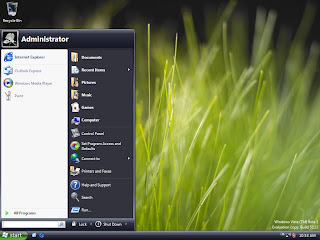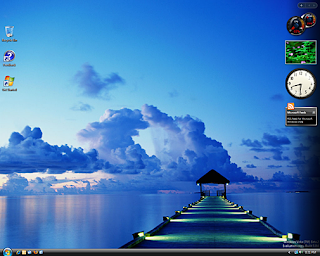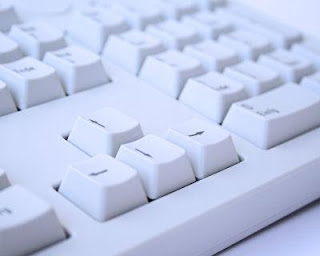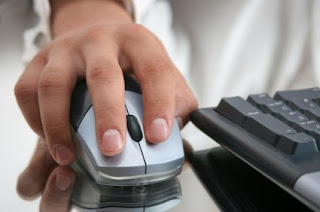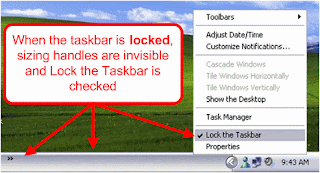
The taskbar is the long horizontal bar at the bottom of the screen. Unlike the desktop, which may be obscured by the windows at the top of it, the taskbar is visible almost all the time. It has four main sections:
In the Start button, open the Start menu. See the Start menu (overview).
The Quick Launch toolbar, which lets you launch programs with one click.
The middle section, which shows you what programs and documents that have been open and lets you quickly switch between them.
The notification area, which includes a clock and icons (small pictures) that communicate the status of certain programs and computer settings.
It is very likely to use the central section of the taskbar more, so let's discuss that first.
Keep track of your windows
If you open more than one program or document at a time, you can quickly begin accumulating the windows on your desktop. Due to cover the windows often to each other or take the whole screen, sometimes it's hard to see what else is underneath or remember what you've already opened.
That is where comes the task bar in his hand. When you open a program, folder or document, Windows creates a button on the taskbar for that matter. The button displays the icon and the name of the item. In the picture below, two programs are open, Calculator and Minesweeper and each has its own button on the taskbar.
Notice how the button on the task bar appears pressed Minesweeper inches indicating that Minesweeper is the active window, which means that it is in front of other windows open and ready for you to interact with.
To switch to another window, click its button on the taskbar. In our example, click the button on the taskbar Calculator brings its window to the front:
Minimize and restore windows
When a window is active (your taskbar button is pressed), clicking on its button on the taskbar minimizes the window. This means that the window disappears from the desktop. Minimizing a window does not close, or delete its contents, simply removes it from a temporary desk.
In the next image, the calculator has been minimized but not closed. You can say it is still running because it has a button on the taskbar.
You can also minimize a window by clicking the minimize button in the upper right corner of the window:
How the task forces for similar items
As more open windows, you see the buttons on the taskbar to reduce the width to allow new buttons squeeze in. However, if the taskbar gets too full of buttons, and buttons for the same program will be grouped into a single button.
To see how this works, suppose you have three images of paintings opened on the desktop. If the taskbar space is insufficient, shows painting of the three windows separate buttons:
But if you have many programs and documents open, the taskbar collapses these three buttons on a single button that displays the name of the group (painting) and the number of elements in the group (3). When you click the menu button displays a list of files in the group:
Clicking on one of the items on the menu is activated your window so you can see.
Tip
To close all elements in the group, click on the taskbar button of the group, and then click Close Group.
See previews of open windows
When you move the mouse pointer to a button on the taskbar, a small image that shows a miniature version of the window. This preview, also called a thumbnail, is especially useful if you can not identify a window by its title alone. And if one of the windows has video or animation for games, you'll see that play in the preview.
When pointing to a button on the taskbar grouped, you'll see a stack of previews, but only a preview of the utmost will be visible.
Note
Taskbar previews the window will not work unless your computer is running Windows Aero, the premium visual experience for Windows Vista. Aero is not available in Windows Vista Starter or Windows Vista Home Basic.
The Quick Launch toolbar
To the right immediately to the Start button is the Quick Launch toolbar. As its name implies, that lets you launch (start) programs with one click. For example, click the icon for Internet Explorer to start Internet Explorer.
You can customize the Quick Launch toolbar by adding your favorite programs to it. Locate the program in the Start menu, click the button, and then click Add to Quick Launch. (If you do not see this option, you can also drag the program icon to the Quick Launch toolbar.) The program icon now appears on the toolbar. To remove an icon on the Quick Launch toolbar, right-click, click Delete, and then click Yes.
By default, the Quick Launch toolbar also contains two special buttons. Click on the Show Desktop button to temporarily hide all open windows and show the desktop, click the button again to show all the windows again. Click the button to switch between windows to switch between open windows using Windows Flip 3D.
Notes
If you can not see the icons that you've added to the Quick Launch toolbar, and you see double angular instead, it means that the icons do not fit on the toolbar. You can click on the double-angled to access the toolbar of hidden programs, but it is better to resize the toolbar to preserve one click access to them.
To resize the Quick Launch toolbar
Right-click an empty area of the taskbar, then click Lock the Taskbar to clear the check mark and unlock the taskbar.
Move the toolbar sizing handle to the right (see photo) until you see all your icons.
Drag the handle to resize the Quick Launch toolbar
If your computer is not running Windows Aero, Switch, click the button between the windows will not open Flip 3D. Instead, you'll see the same window as you would if you press ALT TAB on your keyboard.
The notification area
The notification area on the far right of the taskbar, includes a clock and a group of icons. It looks like this:
These icons communicate the status of something on your computer or access to certain adjustments. The set of icons you see depends on which programs or services you have installed and how the computer manufacturer set up your computer.
When you move the pointer to an icon, you will see the icon of the name or the status of an adjustment. For example, suggesting that the volume icon shows the current volume level of your computer. Referring to the network icon displays information about whether you are connected to the network, connection speed, and the signal strength.
Double-click an icon in the notification area usually opens the program or settings associated with it. For example, double-click the volume icon opens the volume controls. Double-click the network icon opens Network and Sharing Center.
Occasionally, an icon in the notification area will display a small pop-up window (called a notice) to notify you about something. For example, after adding a new hardware device to your computer, you can see this:
Click the Close button in the upper right corner of the notification to dismiss it. If you do nothing, the notification will fade away on its own after a few seconds.
To reduce clutter, Windows hides the icons in the notification area when they have not been used in a while. If you become icons hidden, click Show hidden icons temporarily to the screen icons hidden.
Customize your taskbar
There are many ways to customize the taskbar to suit your preferences. For example, you can move the entire task bar to the left, right, or upper edge of the screen. You can make the taskbar larger, have Windows automatically hide when you're not using, and add toolbars to it.

